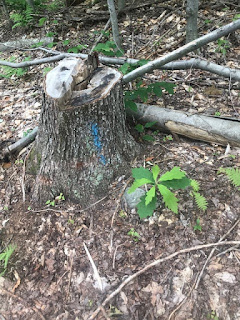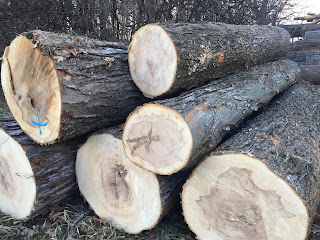ACF Update 2/10/21
For loggers, the wintertime is like the summertime for farmers, or the spring for sugarmakers – it is a short period of time when they make a disproportionate amount of their yearly income. As forest managers, this is when some of our best work gets done – when we can make our forests more diverse, resilient and complex and produce local renewable resources (wood) with the least impacts to soils. When, like this year, we have warm, wet weather into January, it challenges our ability to do this work with the low level of impact that we want to have.
Forest management is certainly not the only activity that benefits from colder winters. Most of us in Vermont rely on skiing, snowboarding, skating, sledding and more to get rid of the “winter blues.” When we can’t do these things it diminishes both our quality of life (fun) and the jobs and economic activity that these industries support.
There
is an overwhelming body of research showing that our winters are becoming
milder, and that our snowpack is decreasing – and that these problems will
continue to increase as our climate changes. While this is certainly an
economic problem and a quality-of-life problem, it will also have a number of
negative effects on forest ecology.
Research
by Dr. Pamela Templer (and others) has illustrated the many ways that
decreasing snow depth in particular negatively influences forests. For trees,
the main issue seems to be the lack of insulation that the snow provides. This
causes freezing to penetrate more deeply into the soil, damaging tree roots, diminishing
trees’ ability to take up nutrients and forests’ ability to store carbon. It is
also linked to substantially slower growth in a number of tree species – most
notably sugar maple.
Decreasing
snow depth also impacts a variety of our native critters. The “subnivean zone”
is the habitat within the snowpack, where many of our native small mammals like
mice, voles, shrews and ermine live out the winter, protected from the extreme
cold temperatures. Small mammals support many important functions in forest
ecology, including (but certainly not limited to) feeding other animals like
owls, foxes and bobcats.
Lower
snow depths are not a problem for all our wildlife -- white-tailed deer, whose
populations were once limited in Vermont by winter severity, are likely to
benefit from warmer winters with less snow. As most other New England states
have already realized, deer overpopulations are a massive biodiversity threat
-- they selectively browse young trees and plants, lowering diversity and
encouraging non-native invasive plants. Every time I visit Andrews I see deer, or recent sign of them moving through the forest, scraping through the snow to look for acorns and browsing young trees.
Aside
from addressing the root causes of climate change (which stretches far outside
the forestry realm), what can we do? Our approach should be both qualitative
and quantitative. From a quantitative perspective, we need to manage our
forests to sequester and store lots of carbon, which is one of the best tools
we have to mitigate climate change. We can manage forests explicitly for carbon
sequestration and storage by leaving some big trees in the woods, leaving lots
of dead wood on the forest floor, avoiding large-scale disturbances and leaving
some areas unmanaged. We're accomplishing all these things at Andrews by leaving lots of big legacy trees, leaving the tops of trees "un-lopped" on the ground and creating many small gaps. We are also leaving about 1/3 of the forest completely unmanaged in what we call "Management Intensity Zone 3."
From
a qualitative perspective, we also need to protect our forests’ ability to be
healthy, to provide amazing wildlife habitat for species under tremendous
stress, and to sequester and store carbon by encouraging resilient
and adaptive forests, those which are able to stay healthy amidst the
many stressors of a changing climate. At Andrews, this means using forest management to
help its relatively young, simple forests become more diverse and complex, and
also actively addressing threats to forest health and diversity like deer
overpopulation and invasive exotic plants.
In a broader sense, we can mitigate
climate change by thinking critically about where our resources come from.
Forest management can’t solve all our problems, but, done well (like we think it's being done at Andrews), it’s an example
of a resource we can be proud of – one that can be extracted while encouraging
the health and resilience of our ecosystems. Using local renewable resources
rather than non-local, non-renewables is one way to take charge of our climate
impacts and lower the effect that we are having on our climate, and peoples,
critters and ecosystems across the globe – and to protect our beautiful, white
snow.
As a reminder, we expect that this forest management project at Andrews will be active through the middle of March, when warm weather will probably thaw the soils again. Depending on how far we've gotten on the project, we could either resume work in August (hoping to finish by October), wait until winter 2021-22 to finish it, or decide that we've done enough, in which case all we would need to do would be to "close-out" trails next summer. We'll see what happens!






Comments
Post a Comment